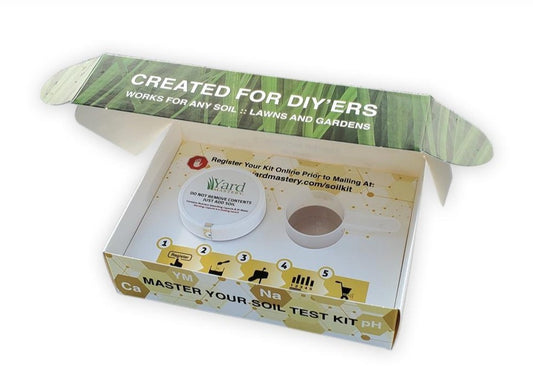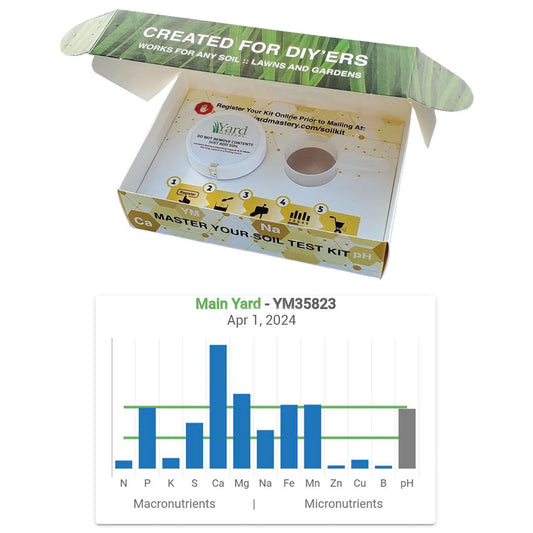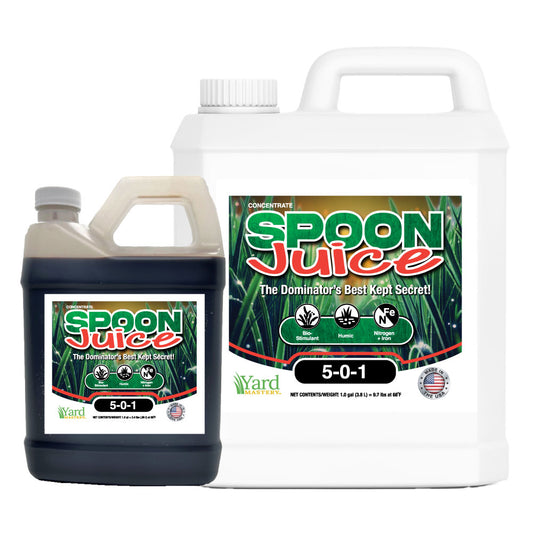I’ve been using Celsius Herbicide in my warm season lawn for the past 7 years with varying degrees of success. In 2016 I didn’t see such great results on mature doveweed until I was patient and gave it time to work on the second application. Over the years I’ve worked with many homeowners who have also used Celsius Herbicide on their warm season turf and the biggest challenge we face with it is the measuring of the granules. The “WG” you see on the label stands for water dispersible granule. This is why when you mix it in your sprayer, you add water first, then the Celsius granules, agitate the mix, add the rest of the water, then agitate again. You want to disperse those granules throughout the content of the spray.
The thing is, with Celsius, you have a VERY low use rate and also, the granules are VERY fine which makes them more difficult to measure visually. You see, big bottles of Celsius Herbicide come with a plastic top that doubles as a pre-marked measuring cup for the product. It’s very specific just to Celsius WG.
The challenge is that for us DIYers, we are oftentimes only mixing a couple gallons up to spray our small yard and the measuring cup is more easily used for professionals who are mixing larger tanks of 100 gallons or more for a full daily spray route.
The key is volume. Having a measuring cup is great, but you also need enough volume to be able to accurately eyeball the level in the cup. If you go to this video and watch for about 10 seconds you will see me trying to level out the cup for a small 3 gallon batch.
Look at the picture here from this video. That’s the measuring cup on top of the bottle. See how close together those marks are? That’s the marking for the small batches we tend to make. Can you see how this leaves alot of room for error? Either an over or under application is easy to make.
This happens quite often with DIYers in my experience. Like I said, I work with DIYers with warm season turf nearly everyday in my Facebook group or in my private training program. People try really hard to get things right but mistakes get made. This is one that’s easy to make even if you have the best of intentions.
So what I started doing was teaching DIYers to weigh the product on a scale instead. This takes all the fudge factor out of it. But now there is a completely different way you have to read the label now, and do some math calculations. We’ve added more “things to buy” (scale that measures in grams down to the 100th) in order to just go spray some weeds.
For most homeowners, we really only have to spray weeds once or twice a year. It’s not a daily thing and so if you have to go to all this trouble just to complete a task that really only gets done a couple times a year, well - it ends up just not getting done or we find another weed control to use that is much more approachable.
Grass Types - Warm Season but no Bahia
But to me, Celsius is worth it. It’s got no heat restrictions which means it can be used even in Texas and Florida summers where things get super hot on our St Augustine lawns. By the way, in case I didn’t mention it earlier, Celsius Herbicide is only for use on St Augustine, bermuda (hybrid too, Zoysia and centipede. It is not to be used on Bahia or any cool season grass.
Celsius knocks out a broad range of weeds we see in our warm season turf including dollar weed, clover, Florida pusley (Florida Snow), and many others.
Celsius Herbicide Rates
You will also notice there are 3 “rates” for different weeds, a low, mid and high. Once again from experience I can tell you that most people either use the low or the high rate. People who are apprehensive use the low rate, and people who are pissed off at the weeds and ready to spray angry use the max rate. In fact, there are people that treat the max rate the same way as the turbo button on their blower. If the thing has a turbo button you can bet it’s pressed all the time, everytime. Same with the high rate of Celsius: if it’s available, people are gonna use it to smoke the weeds in the lawn regardless.


Another reason this happens is that up until recently, you could only buy a big bottle and pay over $130 for it. The typical DIYer with a 5,000 sq ft lawn who only has to spot spray or zone spray twice a year will get over 10 years of chemical in one 10oz bottle. It’s crazy for a DIYer to have to buy and store that much product basically forever.
Easy To Measure Single Use Packs
The makers of Celsius WG (Bayer sold recently to Envu) must have seen some of this too, and they recently released easy-to-use “single use packs” that take 100% of the measuring out of the equation. No more weights, cups, none of it.
The pack contains enough Celsius WG to cover 4,000 sq ft at the low rate, or 2,000 sq ft at the high rate. For us, and the way we spray, you just need a 4 gallon backpack sprayer and you are good-to-go.
For the high rate, just add 2 gallons of water, add the Celsius WG packet, agitate well, clear the line, and you are ready to go spray.
Here is a video I produced showing you how to do it.
If you want to go with the low rate, then that exact same packet goes into 4 gallons of water in your backpack and now you can cover up to 4,000 sg ft for blanket sprays, zones sprays, etc.
It is recommended that the mix be used within 1 week of original mix time to keep efficacy. That is another question people often ask is “how long can herbicide stay ‘good’ once mixed” and in the case of Celsius herbicide, it’s one week.
Now you probably will see just a little bit of stunting growth in St Augustine and I’ve also seen it in my Empire Zoysia. This stunting literally is that, the grass around where you sprayed weeds with Celsius just stops growing. It doesn’t turn brown or burn, it literally just site there. Give it about a week and it will recover and start growing again like normal, and hopefully, the weeds that were sprayed are completely dead by then. If not, the label on Celsius says you can re-apply 2-4 weeks later if needed.
Max Use Rate for Celsius WG Herbicide
Now one thing I want to call out here is the yearly maximum allowable use rate on Celsius WG when doing blanket applications. A blanket application means you are spraying the entire lawn. This is found on the main label of the bottle product but works the same for the single use packs.
The max use rate per year of Celsius WG is 4.83 grams per 1,000 sq ft. On the label you can see that the limit is 210 grams per acre. An acre is 43,500 sq ft so here is the math:
210/43.5 = 4.83 grams per 1,000 sq ft
The high rate for Celsius is 3.2 grams per 1,000 sq ft.
So if you blanket spray your lawn with that high rate and you need to do a second application, you only have 1.6 grams left for the year. And guess what? That just so happens to be the “low rate” for celsius. You can see it above on the screenshots.
So if you are going to go nuts and use that high rate, just keep in mind that if you need a second application, you can only use the low rate for it.
If you are using the single use pack, you can use the high rate one time per year (1 pack in 2 gallons of water). Then on your second application, you will need to use the low rate (1 pack in 4 gallons of water).
Now one thing to understand: these limits are referring to BLANKET applications. If you are just spot spraying, then these limits do not apply. You can use whatever rate you want during the season and spot spray whenever you need to. For me, this is typically only once-per-year anyway and this limit probably won’t hinder most DIYers who only spot spray anyway, but I did feel it was important to point out.

How Does Celsius WG Work?
Celsius works VERY well because it has 3 active ingredients spanning 2 herbicide groups. Groups or classes with herbicides are delineated by mode of action. The mode of action is basically the way the product works. In this case, our active ingredients are killing weeds so the “mode of action” describes “how they kill.”
We have 2 actives (Thiencarbazone-methyl and Iodosulfuron) from Group 2 and their mode of action is described as “AMINO ACID SYNTHESIS INHIBITORS.” You will hear them referred to as “ALS Inhibitors”
These chemicals prevent the production of essential branched-chain amino acids by inhibiting one key plant enzyme, acetolactate synthase (ALS enzyme). Without these essential building blocks, cels break down and the plant dies. These chemicals are systemic which means they get inside the plant and work their way up and down from roots to tips.
The other active ingredient we have here in Dicamba, a group 4 herbicide. This is a very common active ingredient that is a synthetic auxin or growth regulator. Dicamba is also systemic and is what causes the twisting and curling you will see in some weeds after an application.
Attacking weeds in the lawn from essentially 2 different “angles” or 2 different modes of action is what makes Celsius herbicide so effective.
Here is a video where you can see how these two modes of action worked on Clover out at one of my project lawns I care for:
This is also a good article about "Are Lawn Chemicals Safe?" if you are looking for more information on weed control in the lawn.
I’ll see you in the lawn!
Note: in this blog post I point out some things about measuring mistakes and high use rates smoking weeds. Don’t draw conclusions based on my writing style. I do not in any way condone the mis-use of any product. However, I’m also a realist and I know what happens in the real world, not only with DIYers, but with “professionals” too. Let’s all work together to make the most accurate applications we can and if we find some humor along the way, that’s ok too.










